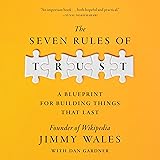Many traders approach the dynamic world of gold futures with strategies borrowed from other markets. This common mistake often leads to missed opportunities and frustrating inconsistencies. Understanding the nuances of each market is critical for success. The video above highlights a specific, foundational concept: the Initial Balance on Gold Futures. It reveals why timing is everything in this volatile commodity.
For consistent profitability in gold trading, precision is paramount. Generic approaches simply do not work. We must look beyond generalized market hours. The Initial Balance (IB) provides a clear roadmap. It is a critical component for informed trading decisions.
Understanding the Gold Futures Initial Balance
What exactly is the Initial Balance (IB)? It defines the first hour of “regular trading hours” for a specific asset. This hour establishes key price levels. These levels often dictate the session’s overall direction. However, the timing of this critical hour varies. Most traders misinterpret this for gold futures. This misinterpretation can lead to significant errors.
The Initial Balance serves as an early indicator. It helps gauge market sentiment. It identifies initial support and resistance zones. These zones are crucial for developing effective trading strategies. Knowing the correct IB is like having a reliable compass. It guides traders through the daily market fluctuations.
The Critical Timing for Gold Futures Trading
Here is where many traders falter. They apply stock market logic to gold futures. Gold does not operate on the same schedule. The official open for CME Gold Futures is 8:20 AM Eastern Standard Time (EST). This is not the New York stock market open. It is distinct and highly significant.
The Chicago Mercantile Exchange (CME) manages the world’s largest centralized gold exchange. Its pit open at 8:20 AM EST dictates the true start. This is a crucial distinction. Ignoring this timing means ignoring the primary driver of gold price action. The Initial Balance for gold futures is therefore set between 8:20 AM EST and 9:20 AM EST. This specific hour establishes the fundamental range. Traders must anchor their analysis to this precise window. Failing to do so can result in drawing incorrect levels. Incorrect levels lead to flawed trading decisions.
Why General Market Opens Mislead Gold Futures Traders
Many retail gold traders focus on the New York, London, or Asia session opens. They treat these as universal benchmarks. In contrast, gold’s market mechanics are unique. Gold futures respond differently. Their liquidity and price discovery center around the CME pit open. Other session opens might cause some volatility. Yet, they do not establish the same foundational Initial Balance. Relying on them creates a false sense of market structure.
For instance, the London open is significant for many European equities. The New York open impacts US stocks and indices. However, for the gold futures market, the CME’s specific opening time dominates. This is because the CME provides the deepest liquidity. It offers the most robust price discovery for gold futures contracts. Prices set outside this window are often less reliable. They lack the institutional backing of the CME open. Traders must understand this difference. It separates profitable strategies from perpetual guessing.
Drawing the Correct Gold Futures Initial Balance Levels
Once the correct timing is understood, marking the levels is straightforward. Identify the high price reached between 8:20 AM EST and 9:20 AM EST. Also, identify the low price during that same hour. These two points form the Gold Futures Initial Balance range. Mark these levels clearly on your chart. They become your primary reference points for the entire trading session.
This range provides immediate context. It shows the market’s initial conviction. Was there an aggressive push higher? Or did sellers dominate early? These early signals are invaluable. They help predict subsequent price movements. The Initial Balance high acts as resistance. The Initial Balance low acts as support. Price action relative to these levels offers powerful trading cues.
Leveraging the Initial Balance for Gold Futures Trading Setups
The Initial Balance is not just a static range. It is a dynamic tool. It generates high-probability trading setups. Traders can identify breakouts, retests, and extensions. These patterns are consistently profitable when applied correctly to gold futures.
Breakouts from the Initial Balance
A breakout occurs when price moves decisively above the IB high or below the IB low. This indicates a shift in momentum. A break above the high suggests strong buying pressure. It often signals a move higher. Conversely, a break below the low points to selling dominance. It anticipates further downside. These initial breakouts are powerful directional signals. They can offer significant profit potential. Traders often look for volume confirmation. Increased volume during a breakout reinforces its validity.
Retests of Initial Balance Levels
After a breakout, price often “backtests” the broken level. This means it revisits the previous IB high or low. A retest provides a second entry opportunity. For example, if price breaks above the IB high, it may return to test that level as new support. If it holds, this confirms the breakout. It then provides an excellent long entry point. The video illustrates this perfectly. Price backtested the Initial Balance high. This then led to a significant move. These retests confirm market conviction. They offer lower-risk entries. The ability of the market to respect these zones is remarkable.
Extensions Beyond the Initial Balance
Price movements often extend beyond the initial range. These extensions are multiples of the Initial Balance range. For instance, a 100% extension means price moves the equivalent of the IB range again. A 200% extension would be twice that distance. These extensions serve as potential profit targets. They also act as areas where price might encounter resistance or support. Understanding these calculated levels helps manage trades. It allows traders to set realistic profit targets. It also helps identify potential reversal zones. The precision of these extensions can be a game-changer for gold futures traders.
The example from the video showed price moving to the 200% extension line. It then backtested the Initial Balance high. This confirms the power of these calculated levels. Over 100 ticks were captured in that specific setup. This translates to $1,000 with a single contract. Such examples highlight the immense potential. This is achieved by anchoring trades to the correct Initial Balance. It allows for consistent setups on gold each trading day.
The Power of Precision: Gold Futures and the CME
The methodology discussed here is not theoretical. It comes directly from the CME. The Chicago Mercantile Exchange is the official source. Its trading rules and market structure dictate gold futures behavior. Understanding these fundamental rules is key. It ensures your analysis is grounded in reality. This information empowers traders. It moves them from guessing to precise execution.
Trading with the correct Initial Balance on Gold Futures eliminates uncertainty. It provides a clear, structured approach. This structure is essential for long-term success. It turns chaotic price action into actionable opportunities. Traders can stop drawing arbitrary lines. They can start using validated, market-specific levels. These levels offer a significant edge. They allow for more confident and consistent trading.











